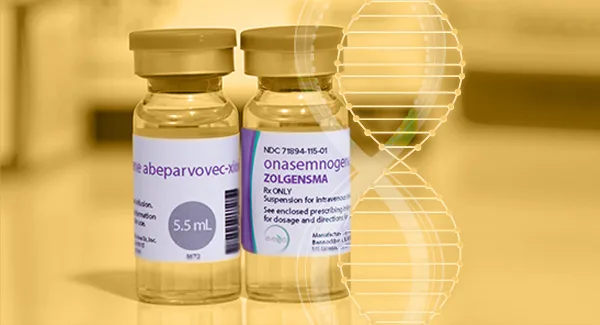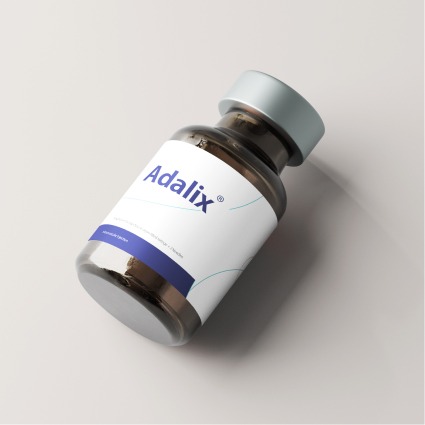Introduction
Zolgensma (onasemnogene abeparvovec-xioi) has transformed the landscape of gene therapy, offering hope to patients with spinal muscular atrophy (SMA). Approved in 2019 by the U.S. FDA, Zolgensma has gained significant attention due to its one-time administration and potentially curative impact on SMA. As of 2024, new updates and studies have brought attention to its long-term efficacy, pricing models, and broader applications in the medical world.
This article delves into Zolgensma’s mechanism of action, clinical developments up to 2024, prospects in the treatment landscape, challenges, and potential impact on healthcare.
What is Zolgensma?
Zolgensma is a gene therapy developed by Novartis to treat spinal muscular atrophy (SMA), a genetic disease caused by the deletion or mutation of the SMN1 gene. This gene mutation leads to the progressive degeneration of motor neurons. SMA affects an individual’s ability to walk, swallow, and even breathe, eventually resulting in premature death if untreated.
Approved for pediatric patients under two years old, Zolgensma delivers a functional copy of the SMN1 gene to motor neurons through an adeno-associated virus (AAV9) vector. Unlike other treatments that require ongoing administration, Zolgensma is administered in a single intravenous infusion.
Mechanism of Action
Zolgensma replaces the missing or mutated SMN1 gene with a functional copy. The AAV9 vector targets motor neurons and delivers the correct gene, allowing the cells to produce the survival motor neuron (SMN) protein. This protein is crucial for maintaining healthy motor neurons and preventing their degeneration.
Once the functional gene is delivered, the motor neurons produce the necessary SMN protein, halting disease progression and even allowing some recovery. The one-time delivery is a significant advantage, simplifying the treatment regimen for both patients and healthcare providers.
Latest Updates and Developments (As of 2024)
Long-Term Efficacy Studies
Since its approval in 2019, Zolgensma has undergone extensive follow-up studies. As of 2024, clinical data shows that Zolgensma remains effective in halting the progression of SMA in most patients. Long-term studies, including the STR1VE-EU and STRONG trials, have confirmed sustained improvements in motor function for children treated with Zolgensma.
Children who received Zolgensma before symptom onset continue to meet developmental milestones that would otherwise be impossible with untreated SMA. Additionally, those treated after symptoms appeared have shown significant motor improvements, although the therapy is most effective when administered early.
Expanded Applications in Older Patients
Initially approved for children under two, recent clinical trials have explored Zolgensma’s efficacy in older patients. Research conducted in mid-2024 indicates promising results in children up to five years old, especially those with less severe forms of SMA (types 2 and 3). While more studies are required, this could lead to expanded approvals and a broader patient base in the future.
Regulatory and Market Updates
In August 2024, the European Medicines Agency (EMA) granted an extension to Zolgensma’s marketing authorization to include treating patients weighing up to 21 kilograms, broadening its reach to children beyond the original weight and age limits. This is especially important for countries with regulatory delays in approving newer therapies.
The approval in the Asia-Pacific region, including Japan and Australia, has also created new market opportunities for Novartis, which has been actively negotiating pricing agreements with these governments. These developments increase Zolgensma’s accessibility to more families globally.
Challenges Facing Zolgensma
High Cost and Pricing Models
One of the most significant challenges Zolgensma faces is its cost. At $2.1 million per dose, it remains the most expensive drug in the world. This price has raised concerns about the affordability and sustainability of gene therapies. Governments, insurance companies, and Novartis have negotiated various pricing models to make the drug more accessible, including installment plans and performance-based reimbursement schemes.
In August 2024, Novartis announced new pricing strategies in collaboration with European health systems, such as “payment-by-results” models, where payments are made based on patient outcomes. Additionally, new financial programs in low—and middle-income countries aim to reduce the treatment cost for eligible patients.
Production and Delivery Constraints
Another major hurdle is the complexity of Zolgensma’s production and delivery. Manufacturing gene therapies requires advanced biomanufacturing facilities, and the supply chain for delivering these therapies to patients is equally complex. Scaling production to meet global demand remains challenging, especially in regions with less developed healthcare infrastructures.
In response, Novartis opened new manufacturing plants in Europe and Asia in 2024, aiming to increase production capacity and reduce the time to delivery.
Immune Response and Safety Concerns
While Zolgensma has been largely successful, there are ongoing concerns about immune responses to the AAV9 vector. In some cases, patients have developed antibodies that limit the effectiveness of the therapy or prevent its administration altogether. Research in 2024 has focused on reducing this immune response, including pre-treatment regimens and alternative delivery vectors.
Moreover, rare cases of liver damage following Zolgensma treatment have been documented. As of 2024, these concerns are being addressed with enhanced safety protocols and close monitoring during the post-treatment phase.
Zolgensma’s Prospects in Gene Therapy
Expanding the Treatment Landscape
Zolgensma’s success has paved the way for future gene therapies targeting other genetic conditions. The technology used in Zolgensma—AAV-mediated gene delivery—has broader applications, with research ongoing for conditions like Duchenne muscular dystrophy (DMD), hemophilia, and certain neurodegenerative disorders.
Scientists hope to develop similar one-time therapies for various debilitating genetic diseases by improving gene delivery vectors and refining dosing strategies.
Personalized Medicine and Gene Therapy
The rise of gene therapy marks a shift towards personalized medicine. As gene sequencing becomes more affordable, identifying the genetic causes of diseases can allow for targeted treatments like Zolgensma. In the future, we may see tailored gene therapies for specific mutations, further enhancing the efficacy of treatments.
Recent developments in CRISPR-based gene editing techniques also offer exciting possibilities. Although Zolgensma uses gene replacement rather than gene editing, the overall advancements in genetic medicine signal a growing era of personalized treatment approaches.
Integration with Other SMA Treatments
Zolgensma isn’t the only treatment available for SMA. Spinraza (nusinersen) and Evrysdi (risdiplam) are two other treatments that have shown effectiveness in treating SMA. While Zolgensma offers a one-time solution, Spinraza and Evrysdi are ongoing treatments that target the same disease mechanism but via different pathways.
Current research, as of 2024, explores the potential benefits of combination therapies. Patients might receive Zolgensma alongside other SMA treatments to optimize outcomes. This approach is especially promising for older patients and those with advanced SMA, where a multifaceted treatment plan could offer greater therapeutic benefits.
Economic and Healthcare Impacts of Zolgensma
Reducing the Long-Term Burden of SMA
The economic impact of Zolgensma extends beyond its high upfront cost. Untreated SMA can result in millions of dollars in healthcare costs over a patient’s lifetime, including expenses for ventilators, feeding tubes, and hospitalizations. By halting disease progression with a one-time treatment, Zolgensma can significantly reduce long-term healthcare expenditures.
In fact, health economists have analyzed Zolgensma’s cost-effectiveness, finding that while the initial cost is high, the long-term savings on care and improved quality of life make it a viable option for healthcare systems.
Shaping the Future of Gene Therapy Pricing
Zolgensma has also sparked discussions about pricing for gene therapies. As more gene therapies enter the market, there is a growing need for innovative pricing models that reflect both the high cost of development and the long-term benefits these therapies provide.
2024 has seen governments and private insurers adopting outcome-based pricing and payment installment plans, which may become the standard for future therapies.
Conclusion
Zolgensma remains a groundbreaking treatment that offers hope to patients with spinal muscular atrophy. Its single-dose approach, remarkable efficacy, and potential curative effect make it a unique therapy in medicine. As of 2024, continued research into its long-term benefits, potential for expanded applications, and improvements in pricing models will shape its future impact on the healthcare landscape.
While challenges such as cost, immune response, and manufacturing constraints remain, the future of Zolgensma and gene therapy looks promising. With ongoing studies and innovations, Zolgensma may inspire the next generation of genetic treatments, offering new hope for countless patients worldwide.
Visit Opal Biopharma to explore how cutting-edge research is transforming care for chronic and genetic diseases.

